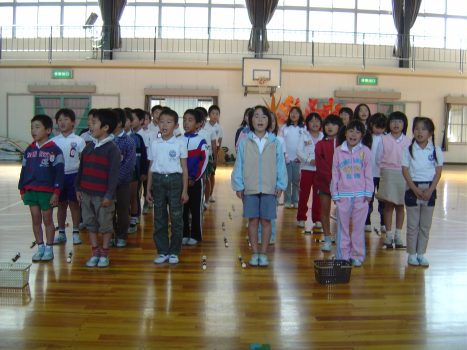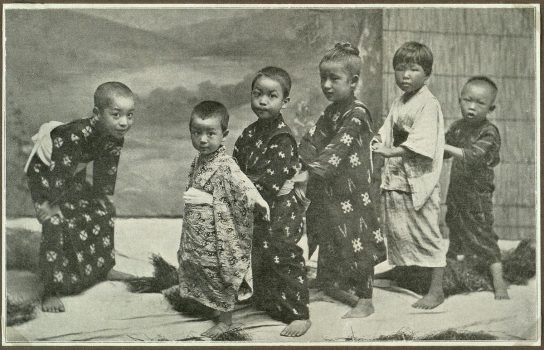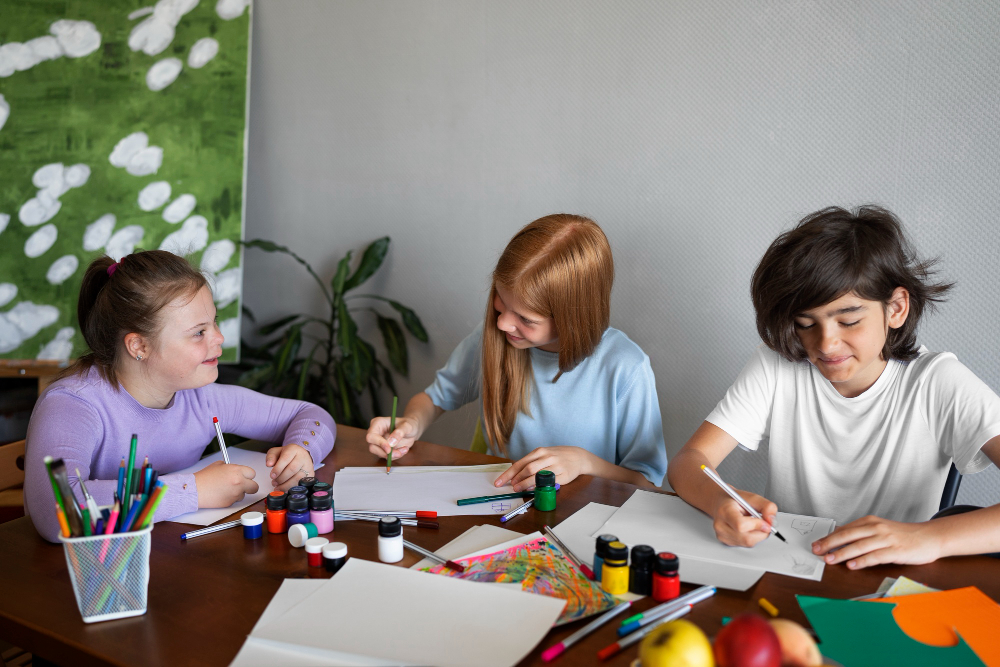 Pin
Pin Photo from Wikimedia Commons
In Japan, the shaping of a child’s character starts early and runs deep. Lessons are not just taught—they are lived. From kindergarten through high school, and from quiet family dinners to vibrant community festivals, children absorb values that stay with them for life. These aren’t just rules or routines. They are building blocks of integrity, patience, and empathy, gently woven into daily moments.
What makes the Japanese approach so enduring is its subtlety. There are no loud slogans or strict lectures. Instead, children watch, participate, and grow into values by living them—through bowing to a teacher, helping clean a classroom, or offering thanks before a meal. This culture of awareness teaches not just behavior, but intent. It nurtures young people who know their place in the world and the impact of their choices on others.
These life lessons Japanese kids learn in school and home may appear simple, yet their effects are profound. They create citizens who act with quiet strength, speak with care, and live with intention. This article explores ten such timeless lessons that shape Japanese children—and inspire us all.
Table of Contents
1. Respect Is the Root of Everything
 Pin
Pin Image from Wikimedia Commons
In Japanese culture, children are taught early that respect isn’t earned—it’s expected. Every action, word, and gesture reflects this core value in daily life. Whether it’s greeting elders with a bow or showing care for a classmate’s belongings, respect is more than a formality—it becomes second nature.
At school, students clean their classrooms, serve lunch, and handle shared duties as equals. These tasks are not punishments but lessons in humility and contribution. Teachers guide them gently, fostering the belief that caring for spaces and people is a sign of maturity.
At home, children call their parents with formal terms like “otōsan” and “okāsan,” showing that reverence begins within the family. These daily practices create a world where dignity flows naturally, and selfish behavior stands out sharply. Through this, kids build empathy, learn restraint, and grow into citizens who contribute meaningfully to their communities.
2. Patience Is Practiced, Not Preached
In Japan, patience isn’t something children are told to have—it’s something they grow into, one quiet moment at a time. This is one of the most enduring life lessons Japanese kids learn in school and home, where stillness is as valued as action. It’s visible during lunchtime rituals, school ceremonies, and even while waiting in lines without complaint.
In classrooms, students are encouraged to listen fully before speaking. Silence isn’t awkward—it’s a chance to reflect. Mistakes are treated as part of learning, and improvement is expected to be gradual. No one rushes the process. This subtle but strong expectation gives children space to fail and grow with dignity.
At home, patience is woven into daily life, like helping with meals or tending to plants. There’s no rush to mastery; only consistency and care. This nurtures discipline without pressure, allowing children to develop internal motivation. Over time, they come to value effort over outcome, and perseverance becomes part of who they are.
3. Group Harmony Over Individual Pride
From a young age, Japanese children are taught that fitting in doesn’t mean losing yourself—it means honoring the group. The idea of wa, or harmony, is central in schools and homes alike. Children learn that their behavior impacts the entire group, not just themselves, which encourages thoughtfulness over self-centeredness.
In classrooms, group projects are not just academic exercises but moral training. Tasks are shared equally, and success is celebrated collectively. Even during sports events, cheer squads don’t only support their own team—they encourage everyone. This approach builds unity, discourages ego, and gives every child a sense of belonging.
At home, this group-mindedness is reflected in shared meals, rituals, and responsibilities. Children are encouraged to help their siblings and consider the family’s needs over personal wants. As they grow, this perspective helps them become adults who listen before they act, and who prioritize peace without suppressing their own voice.
4. Simplicity Brings Clarity and Joy
In Japanese households and classrooms, there is a quiet elegance in doing things simply. Children are raised with the idea that joy doesn’t come from excess, but from intention. Clean lines, uncluttered desks, and organized shelves are not just about neatness—they train the mind to stay calm and focused.
School environments are intentionally minimal. Decorations are seasonal and purposeful. Even lunchboxes—bento—are simple yet balanced, reflecting care without extravagance. Teachers often use few words but speak with warmth and meaning. This approach teaches children to notice the little things, from the rustle of wind to the feeling of gratitude.
At home, toys are chosen with care, and mealtime involves rituals that emphasize presence over distraction. Children are shown how to fold clothes, arrange items mindfully, and appreciate silence. These habits build a deep sense of satisfaction. As a result, children learn to find contentment not in more, but in meaning.
5. Responsibility Starts Small but Lasts a Lifetime
Japanese children aren’t shielded from responsibility—they’re gently guided into it. Even kindergarteners help clean their classrooms, and older students manage school pets, lunch rotations, and gardening projects. These aren’t chores—they are trusted roles, teaching accountability through lived experience.
Responsibility is not framed as a burden, but as a source of pride. When a child forgets something, no one rushes to rescue them. Instead, they are encouraged to solve it themselves. This teaches resourcefulness and the idea that each person’s actions affect the group. Slowly, confidence is built on the quiet knowledge that they are capable.
At home, tasks are age-appropriate but meaningful. A young child might set the table or water plants, while older siblings cook rice or shop for groceries. Parents supervise from a distance, letting children feel the weight of doing things on their own. Through these everyday moments, responsibility becomes part of their identity—not a rule, but a rhythm.
6. Nature Is a Gentle Teacher
In Japan, nature isn’t just scenery—it’s a part of everyday life that teaches children to observe, respect, and connect. Schools often celebrate seasonal changes with festivals and hands-on activities. Whether it’s cherry blossom viewing or rice planting, children are taught that nature’s pace is sacred and worthy of attention.
Outdoor learning is common. Field trips to mountains, temples, or rivers help children notice the changing weather, listen to birds, and understand cycles of life. These experiences are not rushed or overly structured—they’re meant to deepen awareness. Nature teaches patience, acceptance, and the importance of caring for what sustains us.
At home, parents involve children in traditions tied to the natural world—seasonal cleaning, offering thanks at shrines, or preparing seasonal foods. This helps them see their lives as connected to something larger. Instead of relying on screens or artificial distractions, children grow up with a quiet appreciation for the beauty that surrounds them.
7. Effort Is More Honorable Than Talent
In Japanese schools and homes, children are taught that effort—doryoku—is more meaningful than being naturally gifted. Praise often centers on how hard a child tried, not on how quickly they succeeded. This nurtures a growth mindset, where persistence is celebrated and setbacks are just part of the path.
Tests and competitions aren’t focused on identifying the best. Instead, students reflect on what they could improve, how they prepared, and how they supported others. Teachers value the quiet strivers as much as the high achievers. This balanced approach removes the fear of failure and fosters steady self-belief.
At home, parents rarely compare children to others. Instead, they highlight daily efforts—finishing homework, helping with chores, practicing a hobby. Even traditional crafts like origami or calligraphy are less about perfection and more about care and repetition. Over time, children understand that talent may open doors, but effort is what carries them through.
8. Manners Are a Daily Expression of Character
Politeness in Japan isn’t just polite—it’s personal. Children are taught that how they greet others, speak, and even stand reflects their inner values. Saying “thank you” (arigatou gozaimasu) and “excuse me” (sumimasen) isn’t just about words—it’s about presence and consideration. These expressions become habits that shape character.
At school, students bow to their teachers each morning and thank the cafeteria staff after lunch. They don’t speak over others, interrupt, or shout across the room. These gentle boundaries give children a quiet strength, teaching them to be mindful in every interaction. Respect isn’t demanded—it’s offered naturally.
Home life reinforces this tone. Children are corrected with kindness and expected to show appreciation for meals, gifts, and help. Even the way slippers are aligned at the door shows attention to others. These simple acts are powerful reminders that good manners don’t just follow rules—they reveal a deeper awareness of others’ feelings.
9. Community Is Built Through Small Acts
In Japan, children are taught that being part of a community means more than simply being present—it means showing up in small but consistent ways. Helping a classmate pick up dropped books, participating in town clean-up days, or joining school-wide events fosters a culture of shared responsibility and belonging.
These small acts aren’t instructed—they’re modeled. Teachers, older students, and even neighbors set examples by taking care of public spaces, supporting one another, and greeting others warmly. Over time, children absorb the belief that a kind, functional community depends on everyone’s quiet contributions.
At home, families emphasize this connection. Visiting elderly relatives, sharing food with neighbors, or participating in local festivals are all part of a child’s upbringing. This regular participation grounds children in a sense of place and purpose. It shows them that their actions, however small, help shape the kind of world they live in.
10. Gratitude Is a Daily Practice, Not a Special Occasion
Gratitude in Japan is expressed not just in words but in the way life is lived. Children are raised to say itadakimasu before eating and gochisousama after meals—not out of habit, but with genuine appreciation for the effort behind the food. These small rituals make thankfulness a natural part of their day.
In schools, students show gratitude toward their peers, teachers, and environment. They thank classmates for group work, bow after lessons, and express appreciation to visitors. Gratitude is not just taught—it’s felt and shared. It reminds children that they are supported and that life is full of people and moments worth honoring.
At home, parents lead by example. They thank their children for help, acknowledge effort, and celebrate moments of kindness. Gratitude becomes a two-way street, not a command. Over time, this gentle culture of appreciation shapes children into thoughtful, emotionally grounded individuals who notice and value the good in everyday life.
FAQs
Cleaning is seen as a way to build respect for shared spaces and promote responsibility. By tidying classrooms, students learn teamwork, humility, and self-discipline without needing external rewards.
Patience is built into daily life—through silent classroom routines, waiting their turn, and learning at a steady pace. These consistent moments reinforce self-control over time.
Japanese parents model behavior instead of only instructing. They involve children in household routines, set clear but gentle boundaries, and consistently show respect and gratitude in small daily interactions.
Group harmony doesn’t suppress individuality—it teaches children to express themselves thoughtfully and consider how their actions affect others, creating socially aware individuals.
Through respectful communication, shared responsibility, and consistent routines, schools help children develop empathy, self-awareness, and a deep sense of community.

































